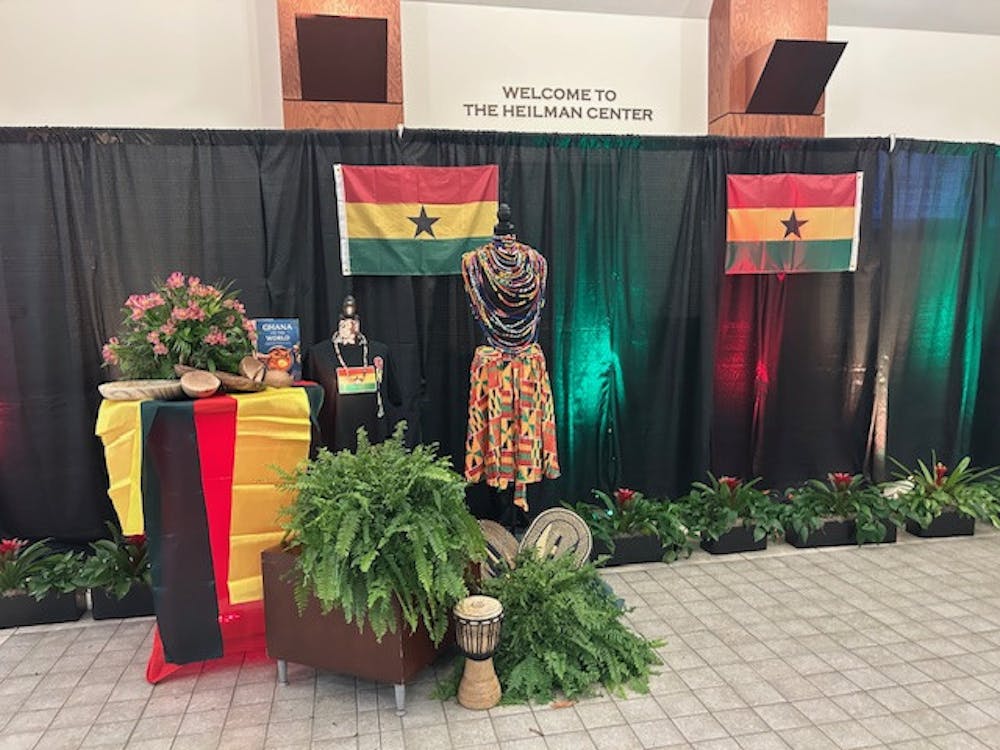Vitality, movement, freedom, naturalness, and individual spirit combine to create a presence called chi-yun. The 1500-year-old concept of chi-yun is controversial because of its subjective nature, but the 20 paintings now displayed in the "Chi-Yun, Breath Resonance in Contemporary Art" exhibit in the Lora Robins Gallery drip with it.
Students in the Museum Studies Seminar worked over the course of a semester to create the exhibit. Three teams curated, marketed, and programmed the event by researching paintings, contacting six artists, and organizing the showing. They also arranged a professor and artist panel, featuring Steve Addiss, Erling Sjovold, Heide Trepanier and Zack Orefice that took place right before the official debut of the exhibition.
"Chi-yun has been debated since the sixth century," says Zack Orefice, a Museum Studies student, and means "breath resonance" in Chinese. Orefice says that the idea's subjective quality made searching for art that embodied it particularly challenging. The paintings chosen for display encompass a variety of styles, materials, and perspectives and reflect the class's desire to show that chi-yun's presence can be found anywhere--so long as it exemplifies the qualities mentioned above.
Heide Trepanier, who has two pieces in the show, speaks about her process for creating chi-yun in her art before the crowd is allowed to see them.
"[Chi-yun is] implied in the process. Sometimes I just throw paint." Her process involves ketchup and mustard bottles filled with ink as well as outlining each drop of ink to give it definition in the final piece. Gulch and Le Manger Du Monde look like an acid-tripping Dr. Suess created them. Fluid yet careful, her art is meticulous and captures the attention of the crowd as soon as it enters the gallery room. Still, she worries about sacrificing chi-yun for the conscious narrative she applies to her painting. "There are a lot of layers to me, which I think goes against the concept of chi-yun."
Her fears are ill-founded, says professor Steve Addiss. "No matter how many things are going on, if you've lost the breath, then you've lost everything." Trepanier has not, he says.
Any artist regardless of their medium can implement chi-yun, the panel stresses. "Each person has a different breath and each person breathes differently," Addiss says.
Another painting that is immediately popular is Canopy by Ray Kass. The piece, created with oil emulsion, pigment on paper, and beeswax, could depict a treetop or the creases in a brain. Or a careful, dramatic portrait of the rainbow brain of a tree.
Artists, patrons, professors, and students gather after viewing the art and talk about the all-encompassing experience of chi-yun in the exhibit. The subjective feeling has taken hold. The power of the pieces is unmistakable and the only spokesperson the art needs, though the students who created the exhibit have done their job well.
"If it moves you," says Zack Orefice. "If you feel it breathing life into you, then it has chi-yun." Congratulations, Museum Studies students, it moved me.
Contact staff writer Jordan Trippeer at jordan.trippeer@richmond.edu
Enjoy what you're reading?
Signup for our newsletter
Support independent student media
You can make a tax-deductible donation by clicking the button below, which takes you to our secure PayPal account. The page is set up to receive contributions in whatever amount you designate. We look forward to using the money we raise to further our mission of providing honest and accurate information to students, faculty, staff, alumni and others in the general public.
Donate Now


